| Botanical Name |
|
| Family |
Geraniaceae - The geranium family. |
| Pronunciation |
mon-SOH-nee-uh e-mar-jin-NAY-tuh |
| Common Name(s) |
Afrikaans: Geitabossie; Naaldebossie
|
| Plant Group |
- Ground Cover A plant with a low-growing, spreading habit, grown specifically to cover the ground.
- Perennial A plant whose life cycle lasts for three or more seasons.
- Veld Flower Small veld flowers of interest, rather than for their usefulness in the garden. Some of these plants have garden potential, particularly for less formal garden situations.
|
| Plant Size |
- Small to Medium
| Tree | 8m to 15m |
| Shrub | 75cm to 1m |
| Perennial/ground cover | 20cm to 40cm |
| Bulb | 30cm to 40cm |
| Succulent | 20cm to 40cm |
|
| Position |
- Partial Shade The area is in shade for part of the day and in full sun for part of the day.
- Sun The area is in full sun for all or most of the day, all year round.
|
| General Information |
- Drought Tolerance: High The plant is well adapted to arid conditions; it can survive long periods of drought and high temperatures without extra water.
- Evergreen Plants that have leaves all year round.
- Water Wise Plant species originating from low rainfall regions that require less water to survive and thrive than other plant species.
|
| Specific Information |
This genus is closely related to geranium and make a cheerful ground cover, flowering for most of the year. The flowers of Monsonia emarginata open in the mid morning sun and close in the evening. The plant is bushy while young and sprawls as it ages. It grows happily in sandy coastal soils and requires little attention. Attracts butterflies and bees and adapts well to a variety of garden positions.
|
| Ad Break |
|
| Flowers |
| Description |
five delicate, crinkly petals
|
| Season |
- Spring to Autumn Plants will seldom bloom for the entire season as given in the list, but should flower during a period within these parameters.
|
| Colour |
|
| Growth Rate |
- Moderate to Fast Specifying growth rate can be very misleading as there is considerable variation of growth rate depending on type and species of plant, available water, supplementary feeding, mulching and general care, as well as the plants suitability and adaptability to the garden environment.
|
| Plant Uses |
- Attracts bees, butterflies or other insects This plant attracts insects which can be food for birds or other creatures in your garden.
- Border A strip of ground, at the edge of a driveway or path in which ornamental plants or shrubs are planted.
- Container Trees, shrubs and ornamental species that can adapt to growing in a restricted environment.
- Edging A low growing plant that provides softness or definition to the edges of a bed or walkway.
- Filler Either a fast growing tree or shrub used temporarily to fill in an area while the permanent plants grow to a desired size, or a plant used to fill gaps in borders or beds.
- Ground Cover Low-lying plants that spread fast, require minimal maintenance, and cover large expanses or bare areas between bulbs or shrubs. They provide protection from erosion and drought and improve the visual appearance of the garden.
- Interplanting Arranging and planting plants in the garden that have different blooming times and habits of growth, extending the amount of time in which the area is in flower.
- Rock Garden An area constructed of larger rocks, arranged naturally, to emphasise the use of stones as a main element. Generally plants used do not need a lot of care.
- Stabilize Banks Plant is used to prevent soil erosion because their roots will form a mat that stabilizes the soil and keeps it from washing away in heavy rains.
- Suitable for coastal gardens Plants adapted to dry, sandy soil, forceful wind, limited rainfall and intense sunlight.
- Suitable for seaside gardens Plants that will survive the hostile environment of harsh salty winds, dry sandy soil, irregular rainfall and heat found in seaside gardens.
- Wild Garden An indigenous garden planted for the benefit of wildlife and birds. Provides food, water, a variety of mini-biomes and no poisonous chemicals are used.
|
| Distribution and Habitat |
from the Western Cape to KwaZulu-Natal and Mpumalanga, in grassland and on sand dunes
|
| Planting Suggestions |
Monsonia emarginata is a veld plant, the seeds of which are similar to those of pelargonium and germinate readily. This little plant responds well to occasional feeding and watering, but I have noticed that the specimens in a hot, sunny position make a denser, shrubby bush than those that receive water or are in light shade.
|
| Medicinal Uses |
Used to treat dysentery and insomnia and as a general stomach remedy.
|
| Ad Break |
|


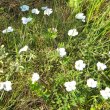

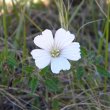
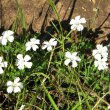
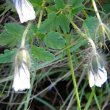
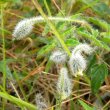
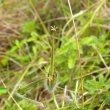
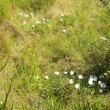


Comments
Enquiry- Monsonia ovata
Hi,
I'm just enquiring if you have got this plant in stock? If I want to buy one how do I go about it?
Waiting for your response!!
Thanks,
Samantha
Monsonia ovata
Hello Samantha
You might be able to get it at one of the indigenous nurseries in the Johannesburg area, namely Random Harvest or Witkoppen Indigenous Flower Nursery, but phone them first to check.
Otherwise the best route would be to buy seeds - it grows easily.
12 seeds cost R20, including postage.
Seeds posted on proof of payment.
Discuss this plant
Share knowledge, ask a question or give an experience.